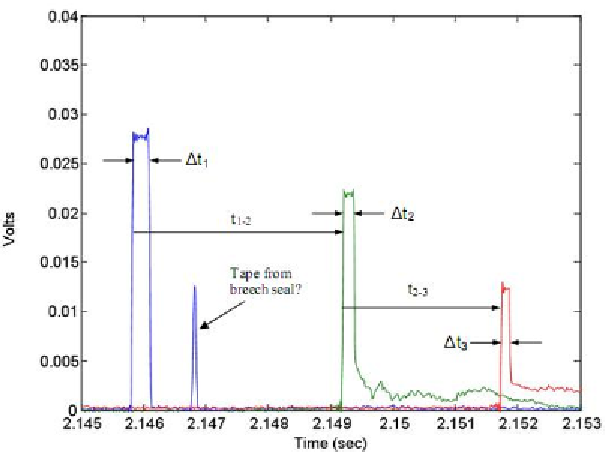Biomedical Engineering Reference
In-Depth Information
The experiments yielded a muzzle velocity of up to 650 ft/sec (198
m/sec). The variation in muzzle is large (on the order of ± 50 ft/sec) and
appears to be due to the method of puncturing the breech seal. For
convenience, the seal is punctured using a sharp knife. The resulting orifice
size varies from a complete circle roughly the diameter of the tube to a half
circle as shown in Figure 35.
Figure 36 shows a typical set of signals from the photo detectors. It is
clear that the time between the photo detectors decreases as the ball moves
down the barrel and that the time the ball obscured each detector also
decreased. Since the ball diameter is 40 mm and we assume it does not
significantly deform during acceleration, the three detectors yield five data
points: t1-2, t2-3, Δt1, Δt2 and Δt3. This data provides two known positions as
a function of time and three velocities at known positions and times. Note that
there are only two known positions as a function of time since the since the
times are referenced to the time at which the ball crosses the first detector. The
time between firing and the ball crossing the first detector is unknown.
Velocity at the three detector points is determined by dividing the diameter of
the ball by the time each detector was obscured.
t
1-2
Reproduced with permission. Copyright retained by Inderscience Publishers.
Figure 36. Typical Data from the Optical Sensors.


